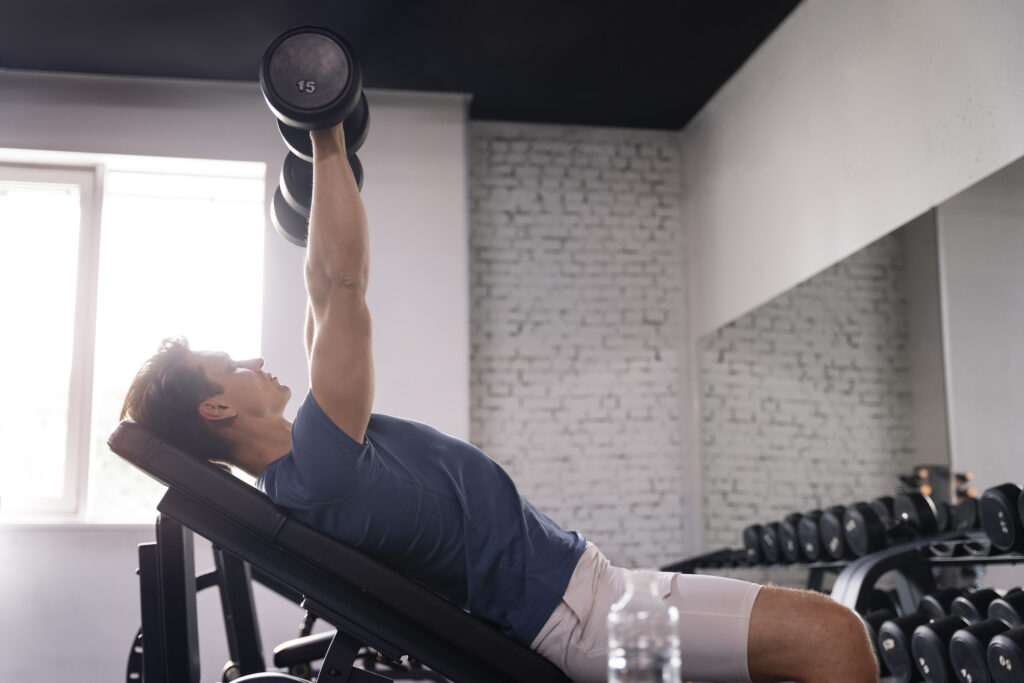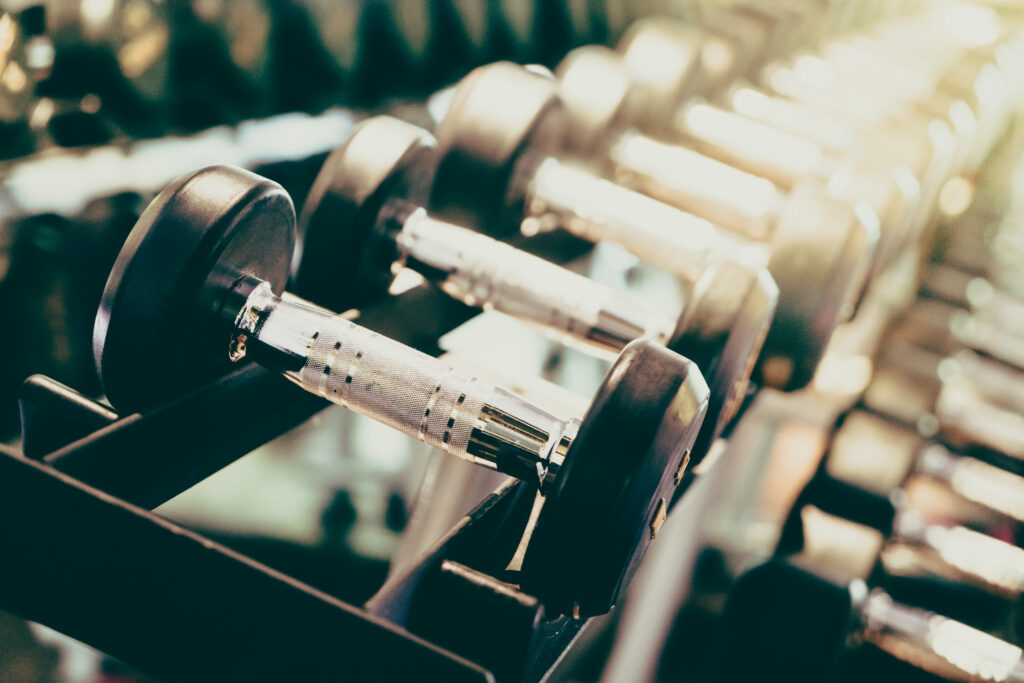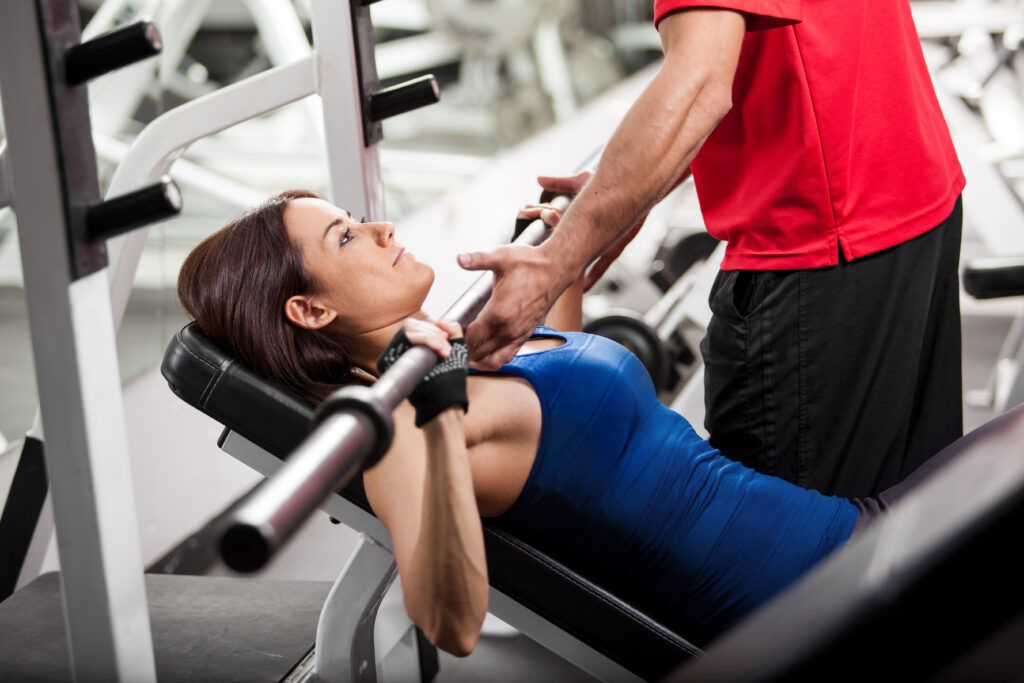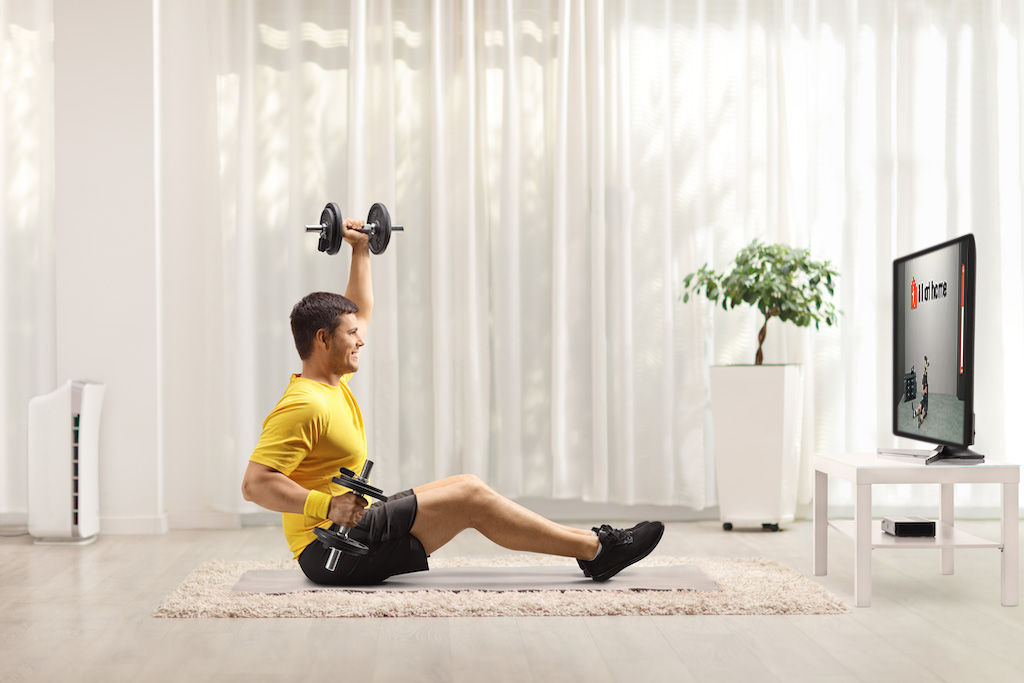Hey there, fitness enthusiasts and beginners! Today, we’re going to talk about one of the most iconic and effective exercises in the gym: the bench press. Whether you’re a seasoned weightlifter or just starting out, the bench press is an essential exercise that can help you build strong chest muscles and increase your overall strength. In this blog, we’ll dive into how to perform a bench press correctly, discuss its advantages and disadvantages, reveal the most common mistakes, and offer guidance for beginners.
The bench press: how to do it?
Let’s start with the basics: how do you perform a bench press? It’s actually quite straightforward, but it requires attention to detail to ensure you do it correctly and prevent injuries.
Step 1: Preparation
It is important to prepare yourself and your body well for a bench press. With these 3 steps
1. Find a flat bench press bench and make sure it is sturdy and stable.
2. Place your feet flat on the ground, about shoulder-width apart.
3. Lie on the bench with your head, shoulders, and buttocks firmly pressed against the surface.

Step 2: Grip
When it comes to gripping the barbell, hand placement plays a pivotal role in shaping your bench press experience. The positioning of your hands along the bar is a crucial aspect that can significantly impact the muscles targeted during the exercise.
To begin, it’s generally recommended to grasp the barbell with your hands positioned slightly wider than shoulder-width apart. This width provides a balanced engagement of multiple muscle groups, including the chest, triceps, and shoulders, allowing for a well-rounded and effective workout.
However, the beauty of the bench press lies in its versatility. You have the freedom to tailor your grip width to align with your specific fitness goals and preferences.
Step 3: Lowering the bar
Take a deep breath and tighten your chest muscles. Slowly lower the barbell to your chest while bending your elbows. Keep your forearms vertical.
Step 4: Pushing up
Push the barbell upward as you exhale, but make sure your elbows do not lock out at the end of the movement. Keep them slightly bent to protect your joints. Repeat this movement for the desired number of repetitions.
The benefits of the bench press
Now that you know how to perform a bench press, let’s take a look at its benefits:
- Chest muscle development: The bench press is the king of chest exercises and helps you achieve those coveted chest muscles.
- Strengthening other muscle groups: In addition to the chest, the bench press also engages your triceps and shoulders. This makes it an excellent compound exercise for overall upper-body strength.
- Increased functional strength: The strength you build with the bench press can assist you in daily activities such as lifting, pushing, and pulling.
- Muscular endurance: By performing multiple repetitions and sets, you can also improve your muscular endurance.
- Variations: There are numerous variations of the bench press, such as the incline and decline bench press, which target different parts of your chest muscles.
The drawbacks of the bench press
While the bench press has many advantages, there are also some potential drawbacks to consider:
- Risk of injury: If performed incorrectly, the exercise can lead to injuries, especially to the shoulders, elbows, and wrists. Ensure that you maintain proper form and start with light weights to protect yourself.
- Excessive focus on the chest: While this can be an advantage if you’re specifically looking to develop your chest muscles, it can also lead to imbalanced development if you neglect other muscle groups.
- Equipment required: You need a barbell and a bench press bench, which means you need access to a gym or must have this equipment at home.
Common mistakes in the bench press
Now that you know how to perform a bench press correctly and are aware of its advantages and disadvantages, let’s look at some common mistakes to avoid:
Lifting too much weight
Starting with light weights and gradually increasing the resistance over time is a fundamental principle in any effective strength training program. This approach not only helps prevent injuries but also plays a pivotal role in enhancing your form, strength, and overall fitness levels.

When you begin with lighter weights, you allow your body to adapt to the demands of the exercise. This adaptation process involves your muscles, tendons, ligaments, and even your nervous system. By starting with manageable weights, you reduce the risk of straining or overloading these structures, which can lead to injuries such as strains, sprains, or even more serious issues like muscle tears or joint problems.
Inadequate warm-up
Incorporating a comprehensive warm-up routine into your strength training regimen is a crucial step in ensuring a safe and effective workout. While starting with light weights and gradually increasing them is essential, it’s equally important not to overlook the significance of preparing your muscles and joints through proper warm-up techniques.
Insufficient rest time
Incorporating adequate rest and recovery periods into your strength training routine is just as important as the exercises themselves. The balance between exertion and recovery plays a pivotal role in your overall progress and, crucially, in preventing injuries that can result from overtraining.
When you perform strength training exercises, your muscles experience micro-tears. These tiny tears are a natural part of the muscle-building process and are essential for muscle growth and strength development. However, for these tears to heal and for your muscles to grow stronger, they require sufficient time to recover. This is why it’s essential to allow enough time between sets during your workout sessions.
Lack of a spotter
Lifting heavy weights demands a high level of attention to safety, and having a spotter by your side is a crucial aspect of ensuring your well-being during these intense lifting sessions. A spotter plays a pivotal role in providing assistance when you encounter challenges, especially when you’re unable to lift the barbell or weights back to the starting position.

How to get started with the bench press
For beginners, the bench press is a fantastic exercise to kickstart your journey towards building strength and muscle mass. Here are some essential tips to help you get started and make the most of your bench press workouts:
- Learn the basics: Before diving into heavy lifting, invest time in mastering the correct bench press technique. Proper form is crucial not only for safety but also for targeting the right muscles effectively. If you’re unsure about your form, consider seeking guidance from a certified trainer who can provide valuable insights and corrections.
- Start light: As a novice, it’s important to begin with a weight that you can comfortably handle. Using lighter weights initially allows your body to adapt and reduces the risk of injury. Gradually increase the weight as you build strength and confidence. Don’t rush the process; gradual progression is key to long-term success.
- Add variety: Once you’ve established a solid foundation with the standard bench press, consider incorporating variations like the incline and decline bench press into your routine. These variations target different areas of your chest muscles, providing a well-rounded approach to chest development. Variety not only keeps your workouts interesting but also helps prevent plateaus in your progress.
Remember, consistency is the linchpin of success in any exercise program, including the bench press. Stick to a regular workout routine, maintain proper form, and progressively challenge yourself with increasing weights. With dedication and patience, you’ll be well on your way to building a stronger, more impressive chest in no time!

Getting fit with Fit at Home
Would you also like to achieve your goals, lose weight or improve your fitness, but do you find it too big of a step to do this in public? Join Fit at Home and work out on your TV, safely and comfortably from your own home!
We offer various workouts for the whole family. Whether you want to lose weight, work on your core, start with Pilates or improve your fitness, it’s all possible. Additionally, you can easily search for the workouts you’re looking for. Simply click on categories and find a workout that suits your needs for the day!
With Fit at Home, you can lose weight with just three 20-minute workouts per week. So, what are you waiting for? Sign up and become the fittest version of yourself!